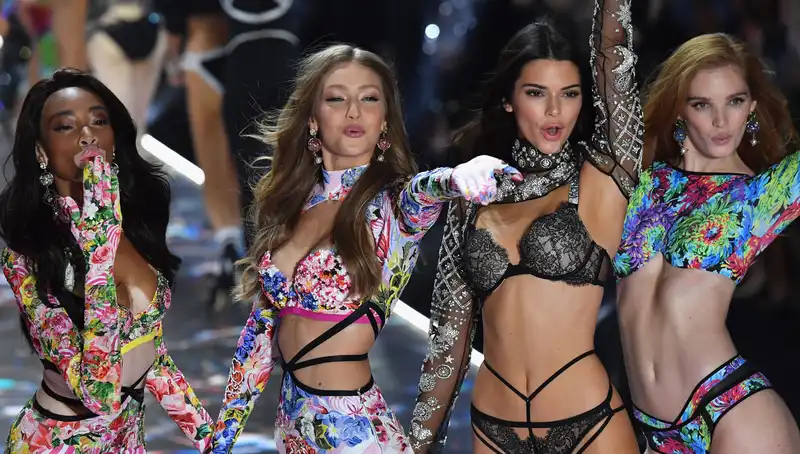
The old Victoria's Secret was more complicated than a man's fantasy.
In 2022, up-and-coming pop singer Jax had her first hit from a retailer that every woman in America knows. “I know Victoria's Secret,” she trills in the chorus.
This radio-friendly reference to America's most recognizable lingerie brand is rather half-true. It is true that Victoria's Secret's heyday was dominated by controversial CEO Les Wexner and Chief Marketing Officer Ed Razek in an era of ultra-push-up bras, dark-lit stores, and “angel” models. It is also true that behind the scenes, the women in the upper echelons of the company tried to build Victoria's Secret in their own image. However, they were not always successful.
In Selling Sexy, female executives have an unexpected presence: Victoria's Secret and the Unraveling of an American Icon, a new book about the rise and fall of Victoria's Secret and its influence on the American retail industry. The book delves into headline-grabbing topics such as the early versions of the Victoria's Secret fashion show and Wexner's connection to sex offender Jeffrey Epstein, but what struck me most as a reader was the quiet but intentional woman in the background. The first catalog business and a series of San Francisco boutiques were created by a husband and wife team, Gay Raymond and Roy Raymond. These businesses were eventually acquired by Wexner's L Brand Group, along with Victoria, the first fictional character the brand would develop.
The famous VS catalog was led by a woman named Cynthia Fedas-Fields from the mid-1980s until 2000. Their contributions and opinions were sometimes overshadowed by the demands of their male bosses. Whereas the women saw lingerie as a potential tool for empowerment, the highest echelons of leadership saw it as something that ultimately brought their fantasies to life. (“We are selling hope in a bottle,” according to a 1985 interview with Wexner cited in this book.) It is sometimes difficult to reconcile what the brand ultimately presented to the world with the aspirations of the people who actually worked there.
Authors Lauren Sherman and Chantal Fernandez did not expect to find so many of the women who shaped Victoria's Secret behind the scenes. As they began their interviews, they quickly discovered that several of Victoria's Secret's key figures had turned to roles at the brand rather than to the careers available to women at the time (primarily teaching and nursing). During the 1970s and 1980s, Victoria's Secret's influence As it grew, “it was a moment of career shift for women, and many women were greatly enriched by working for Victoria's Secret,” says Fernandez.
“I think fashion and retail was an industry where women were able to advance more quickly because of their connection to customers,” Sherman says.
“And Wexner, despite his shortcomings, trusted and promoted many women in his business.
Shedding light on this fact is one of the many nuances of the brand's history that the interviewing duo, who met working together for The Business of Fashion, wanted to highlight. Victoria's Secret definitely had its flaws and had a negative impact on the culture. Sherman and Fernandez's reportage, including the mistreatment of models and the backlash against the sexy image of the mid-2000s, is a stone's throw from the path that led to Victoria's Secret's eventual downfall. In doing so, the two wanted to paint a fair picture of all the factors that led to Victoria's Secret being known as it is today. Sherman explains, “The way the business press talks about a company is very black and white.”
“Much of the coverage about Victoria's Secret has essentially been reduced to sex and misogyny.
She notes that “consumers loved it for a time. At its peak, Victoria's Secret fashion shows were 12. The brand reached 4 million viewers on primetime television, and before and after the fall, it captured the largest share of the U.S. lingerie market.
As Selling Sexy has documented, the brand has lost some of the luster of the late 90s and early 2000s. Fernandez notes that the brand has lost much of its cultural value to brands like Skims, which are inclusive but understand how to capitalize on celebrity. But the Columbus, Ohio-based retailer is ready to prove whether it has learned from its own history. Tonight, the Victoria's Secret Fashion Show returns in its original form, complete with glittery runways and angel wings. It will also be more inclusive than in the past: for the first time, plus-size and transgender models will walk the runway alongside OG angels like Tyra Banks and Candice Swanpole. The revamped show is the first major move under the leadership of current CEO Hilary Super, who was appointed in August.
The return to the catwalk was already in the works before Super joined from Savage x Fenty. However, it is hard not to hope that fresh female leadership at the top of the brand will help correct the course of what has been a lack of female voice in the past. Either way, Fernandez and Sherman are paying attention.
.
Comments